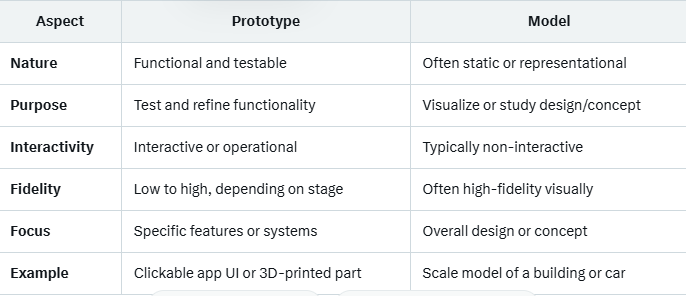Shenzhen Alu Rapid Prototype Precision Co., Ltd.
Industry News
- Home
- News
- What is the difference between prototype and model
The terms prototype and model are often used interchangeably in casual conversation, but they have distinct meanings in design, engineering, and product development contexts. Here’s a concise breakdown of their differences:
Prototype
1.Definition: A prototype is a functional, often preliminary version of a product or system built to test and validate specific aspects, such as functionality, usability, or performance. It’s typically interactive or operational to some degree.
2.Purpose:
a.To test hypotheses, refine designs, or identify issues (e.g., usability, fit, or technical feasibility).
b.To gather user feedback or demonstrate functionality to stakeholders.
c.To iterate toward a final product.
3.Characteristics:
a.Functional/Interactive: Can be low-fidelity (e.g., a clickable wireframe) or high-fidelity (e.g., a working product part).
b.Iterative: Often one of multiple versions, evolving based on testing.
c.Scope: Focuses on specific features or systems (e.g., a single component or user flow).
Model
1.Definition: A model is a representation of a product, system, or concept, often static or simplified, used to visualize or study its design, structure, or behavior. It may not be fully functional.
2.Purpose:To illustrate a concept, design, or system (e.g., for presentations or analysis).
a.To study proportions, aesthetics, or theoretical behavior without full functionality.
b.To communicate ideas to stakeholders or for educational purposes.
3.Characteristics:
a.Static or Simplified: Often non-functional or limited in interactivity (e.g., a scale model or diagram).
b.Visual/Theoretical: Focuses on appearance or conceptual representation rather than full operation.
c.Scope: Can represent the entire product or system, not just specific features.
Key Differences

